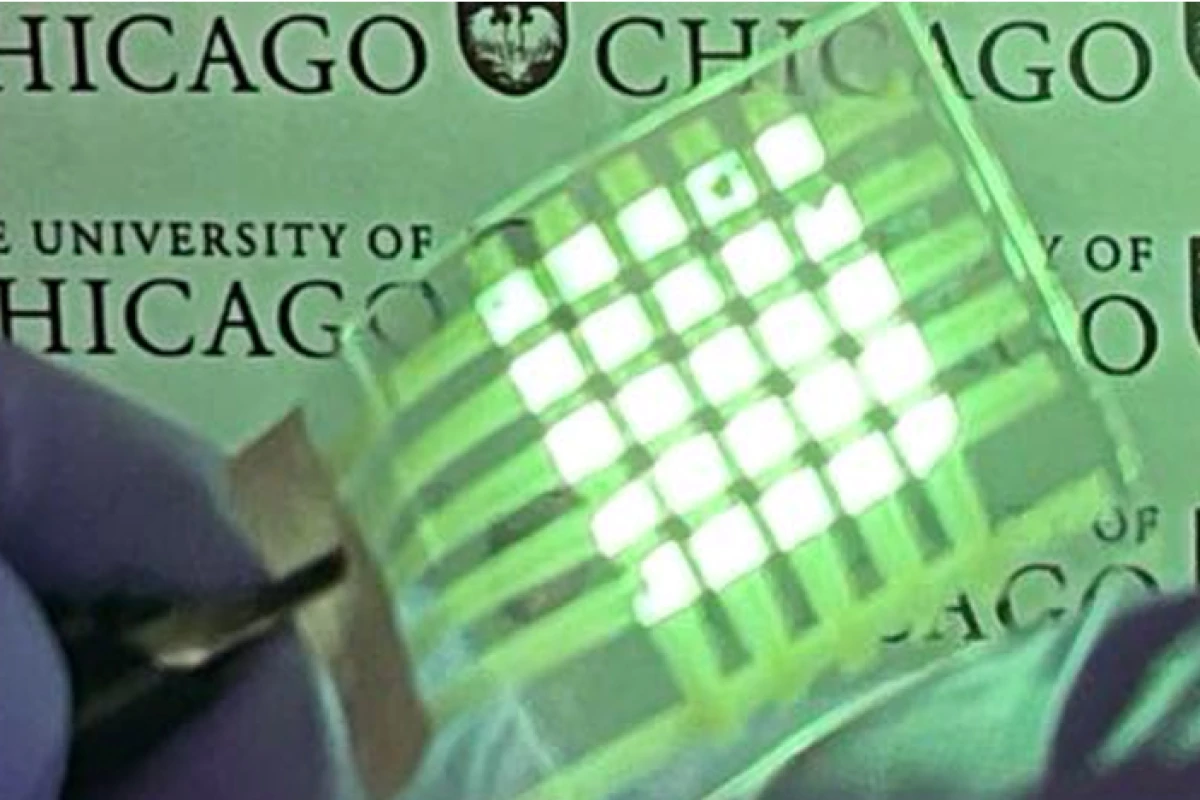Researchers have developed a new OLED display that can be stretched to more than twice its length while still maintaining light emission and a clear image. The development opens the door to a wide range of wearable electronics.
An organic light-emitting diode (OLED) contains thin, flexible sheets of small organic molecules that emit light in response to an electric current. OLEDs are more energy efficient than older LED and LCD displays and are used to make TV and computer screens, and displays for smartphones and handheld gaming consoles.
Following decades of development, OLEDs have become one of the most advanced electroluminescent technologies. But researchers are always looking for new uses. With their low voltage, high efficiency and brightness, and low price, OLEDs are the perfect technology for integration into wearable and implantable devices. But they need some tweaking to improve their softness and stretchability.
Enter researchers from the University of Chicago, who’ve tackled the tight chemical bonds and stiffness of current OLEDs to develop an entirely new, more stretchable alternative.
“The materials currently used in these state-of-the-art OLED displays are very brittle; they don’t have any stretchability,” said Sihong Wang, co-corresponding author of the study. “Our goal was to create something that maintained the electroluminescence of OLED but with stretchable polymers.”
With their background in molecular engineering, the researchers knew that developing a stretchier OLED would require some molecular manipulation. Using computational predictions to develop their new OLED polymers and testing several prototypes, the researchers struck upon a winner with thermally activated delayed fluorescence (TADF), a highly efficient way of allowing organic material to convert electricity into light.
By embedding alkyls – organic chemicals that contain only carbon and hydrogen atoms arranged in chains – in the polymer between TADF units, softness and flexibility were enhanced. The newly designed OLED could be stretched to more than twice its original length without disrupting its light-emitting abilities or display of a clear image.
“We have been able to develop atomic models of the new polymers of interest and, with these models, we simulated what happens to these molecules when you pull on them and try to bend them,” said Juan de Pablo, co-corresponding author of the study. “Now that we understand these properties at a molecular level, we have a framework to engineer new materials where flexibility and luminescence are optimized.”
This new type of OLED would appear to outperform Samsung’s wearable health-monitoring system, announced in 2021, which could stretch by as much as 30% without adversely affecting display or monitoring performance. The researchers say that their stretchable OLED device could have a wide range of applications in next-gen wearable electronics and health sensors.
“This is the class of material you need to finally be able to develop truly flexible screens,” said de Pablo. “This work is really foundational and I expect it to allow many technologies that we haven’t even thought of yet.”
The team plans to develop new versions of the display, integrating additional colors into the fluorescence and improving performance and efficiency.
“The goal is to eventually get to the same level of performance that existing commercial technologies have,” Wang said.
The study was published in Nature Materials.
Source: University of Chicago





